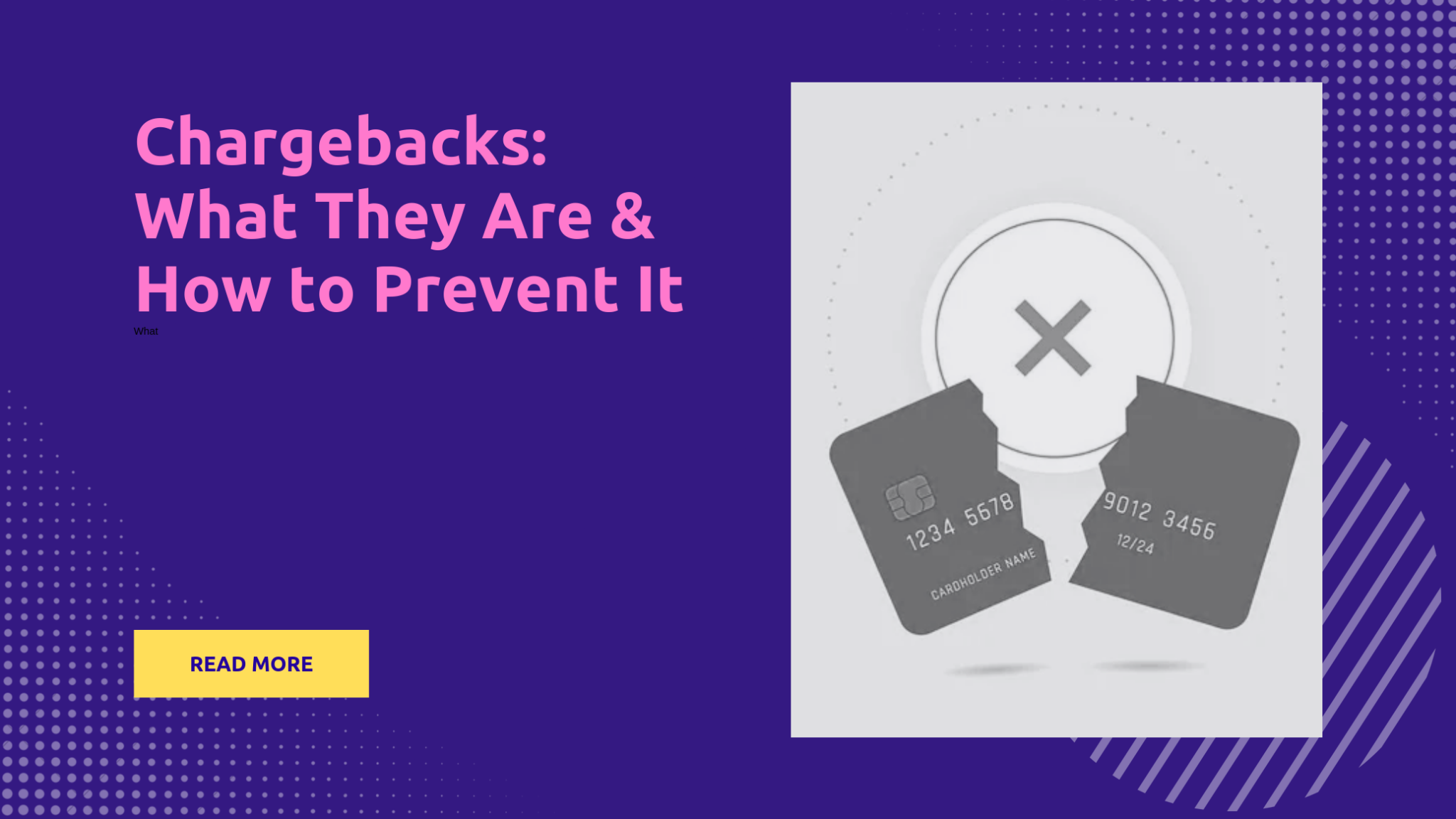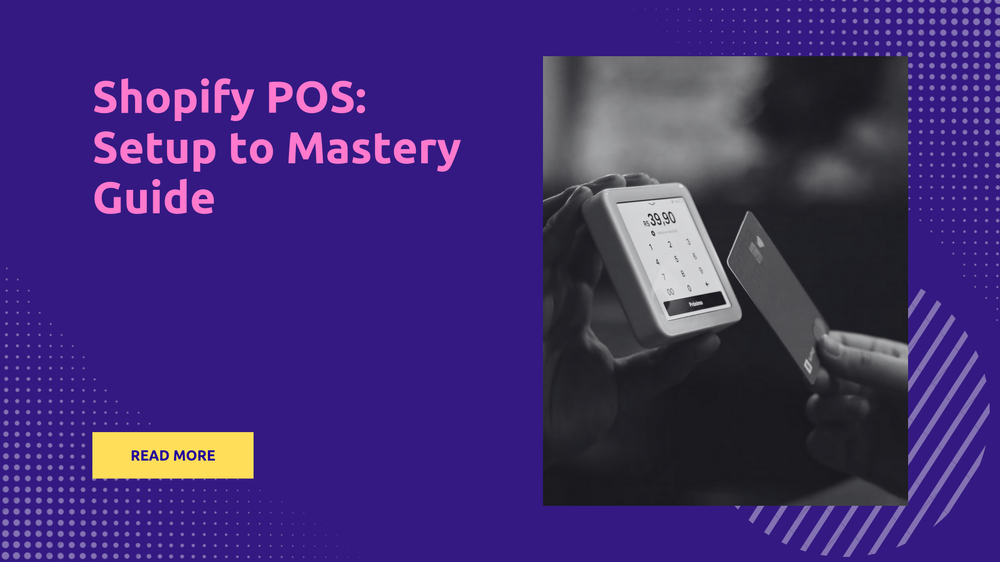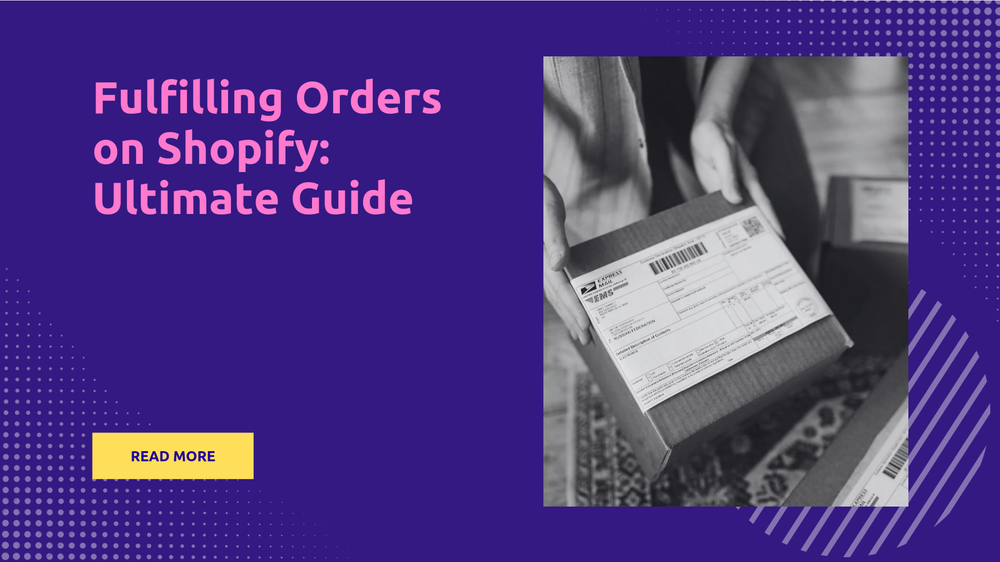Chargebacks on Shopify: What They Are and How to Prevent It
By Abhishek Sebin on

Chargebacks are a frustrating reality for any business that accepts credit card payments, especially in the world of e-commerce. They're more than just a lost sale—too many chargebacks can trigger a cascade of financial and operational issues, from increased payment processing fees to outright losing the ability to accept payments.
Understanding what chargebacks are, why they occur, and how to manage them is crucial for protecting your Shopify store. This guide will walk you through everything you need to know about chargebacks on Shopify. Let's begin!
Understanding Chargebacks
What is a Chargeback?
A chargeback is when a customer's bank asks for their money back from a business. This happens when they dispute a charge they don't agree with or didn't authorize. The bank takes the money back directly from the business.
Chargebacks vs. Refunds
Both chargebacks and refunds involve giving money back, but they work very differently. A refund is when a business gives money back to a customer, usually because they asked for it. A chargeback happens when the customer asks their bank to get the money back.
So, instead of the customer and business working it out directly, the bank gets involved. Key people in a chargeback are the customer, their bank, and the business. With a refund, it's just the business and the customer. Chargebacks also come with extra fees for the business, and they might also lose the product and pay higher processing fees. Refunds don't have these issues and usually leave customers happier. If a chargeback starts, the business can't also give a refund. And if you give a refund, a customer can't also do a chargeback.
Why Chargebacks Happen in E-commerce
There are several reasons for chargebacks:
1. Absence of Order Tracking
This is a big one. These days, customers expect order tracking the moment they click "buy". If you keep them in the dark about the status of their order, they might start to worry and send a chargeback.
2. Delivery Issues
If a customer's order is never shipped, or is lost or delayed in the mail, it could result in a chargeback. We'll explore ways to prevent this later in the article.
3. Damaged or Defective Goods
Imagine a customer orders a glass vase, and it arrives shattered. Or they buy a new phone that doesn't work at all. These situations can cause a chargeback because the product isn't what they expected.
4. Misleading Product Descriptions
If a shirt is advertised as 100% cotton but it's actually a mix of materials, or the product doesn't match the color or size in the description, a customer might file a chargeback.
5. Subscription Issues
If a customer forgets to cancel a subscription and gets charged again, they may initiate a chargeback.
6. Fraud
This is when someone uses stolen payment information. For example, someone uses a credit card that's not theirs to make a purchase. The owner of the card may request a chargeback for those fraudulently purchased products.
7. Consumer Disputes
These are disagreements between a customer and a business about a payment. This could be because a customer claims they didn't make the purchase or they're not happy with the product or service. Sometimes it's because they misunderstood what they were buying.
8. Authorization Issues
These occur when a payment wasn't properly approved by the bank. This might happen if the business didn't get approval before taking payment, or if there was an issue with the approval itself (such as being blocked because of suspected fraud).
9. Incorrect or Unexpected Charges
If a merchant charges a customer $75 instead of the correct $50, or charges them twice, the customer might dispute the order.
10. Friendly Fraud
This is when a customer disputes a real purchase to get their money back while keeping the product. Sometimes this happens when a customer forgets about a purchase. Other times, they do it on purpose to get the item for free. They might lie and claim they never got it or that it was faulty.
11. Family Member Purchases
An extension to friendly fraud and also known as family fraud. If a child uses their parent's credit card without permission, the parent might file a chargeback once they find out.
The Chargeback Process
It's useful to know how chargebacks work. You may find this flowchart helpful.
How a Chargeback Starts
A chargeback starts when a customer disagrees with a transaction and asks their bank to get the money back. This usually happens because they think there was a mistake with their order, or they didn't authorize the charge.
Who is Involved?
Several key people and institutions are involved in this process:
- Customer: They start the chargeback by asking their bank to get their money back, usually through a customer support portal. They are claiming the charge was wrong and may provide some evidence.
- Merchant: The merchant is on the receiving end of the chargeback. They get a notification and have a short time to respond. They can either accept or dispute it. They might need to provide proof they delivered the product.
- Bank/Card Issuer: This is the customer's bank. They get the chargeback request, check it, and might ask for more information from the merchant. The bank decides if the customer gets their money back.
- Card Network: These are companies like Visa or MasterCard. They make the rules for chargebacks and decide how many chargebacks are too many. They facilitate the chargeback process and may charge fees to the merchant.
Chargebacks Explained Step-by-Step
Here's what typically happens in the chargeback process:
- Dispute Starts: The customer contacts their bank about the charge.
- Bank Checks: The customer's bank reviews the claim and might ask the customer for more details, then informs the card network.
- Merchant Gets Notified: The card network relays this information to the merchant's bank, which in turn tells the merchant about the chargeback through their payment processor.
- Merchant Responds: The merchant looks at the chargeback and decides if they should accept or dispute it. They may need to gather evidence.
- Evidence is Sent: If the merchant decides to dispute the chargeback, the merchant sends the evidence to their payment processor.
- Bank Decides: Both banks look at the evidence from the customer and merchant, and decides whether to give the money back to the customer or not. This is the final decision.
- Resolution: The bank and payment processor tells everyone what they decided. The merchant either gets their money back, or the customer keeps it.
The Impact of Chargebacks
Chargebacks can seriously impact your business. First off, you lose the money from the sale. If you've already shipped the product, you lose that too since the money is taken right out of your account.
On top of losing the sale, you'll also get hit with chargeback fees. These can be anywhere from $15 to $100+ each time, even if you win the dispute.
Now, your payment processor might see you as a 'high-risk' business if you get too many chargebacks. This can mean higher transaction fees for every sale. So instead of paying 2.9%, you might be paying 4.5% or even more. And to add to the frustration, your acquiring bank (the one that handles your money) will also charge extra fees related to your high chargeback rate.
And they might make you deal with stricter rules too, like not being able to sell in a particular region.
If you get too many chargebacks, your payment processor might actually stop working with you. That means you can’t accept credit card payments at all. Each processor and card network has its own threshold for what's considered 'too many chargebacks'.
Dealing with chargebacks is a real drain on your time and resources. You'll need staff to deal with the disputes, find evidence, and talk to banks and payment processors. You might even need to invest in extra help with chargeback management software, tools to prevent fraud, and better customer service.
Luckily, there are many tried-and-tested ways to prevent chargebacks. Let's take a look at them.
Preventing Chargebacks
There are a number of strategies that you can implement to prevent chargebacks.
Use Shopify Fraud Analysis
The easiest way to prevent fraudulent chargebacks is to avoid accepting those orders in the first place. Shopify automatically calculates a risk level for every order based on factors such as similarity with other fraudulent transactions, mismatch in billing and delivery addresses, etc.
While it may be tempting to fulfil a medium or high risk order to earn a quick buck, it's worth remembering that these fraud analysis systems have seen millions of fraudulent transactions, and are well trained to determine suspicious orders. For medium-risk orders, we suggest getting in touch with the customer and asking them to use a different card. If the customer was indeed fradulent, you'll probably never hear back from them!
When you receive an order with medium or high risk levels, you can choose to cancel the order and refund the money. Note that time is of the essence—you need to act fast when refunding the order: within the same day if possible—otherwise the customer can file a chargeback saying the goods were never received. A quick solution is to use Shopify Flow to automatically send an email to your team when a risky order is received. Here's an example to get you started:
Sometimes, Shopify's own fraud analysis tools may not be enough and you might need a dedicated app. Check out our list of the best fraud prevention apps for Shopify.
Keep Customers in the Loop
Chargebacks tend to happen when customers feel they have been scammed. Put yourself in the customer's shoes: they order something online, get a confirmation email, and then... nothing. A week goes by with zero communication and they're left wondering if their order was even processed. Impatience turns to anger, and they finally file a chargeback in an effort to get their money back. Then, just hours later, their order arrives.
Don't let this happen. Customers need to be informed at all times about the status of their order so they know what timelines to expect. Order tracking emails become especially important when an order is delayed, as customers might be kept waiting longer than expected.
- Confirm customer orders with emails and SMS text messages. This makes sure they are aware of their purchases.
- Clearly communicate when orders will be shipped, including tracking numbers, and delivery updates so that customers can avoid making assumptions about timelines.
- Build trust with your customers. Provide a customer support line and encourage your customers to resolve issues directly with you instead of making a chargeback.
In fact, preventing chargebacks is one of the main goals of Postship, our Shopify app for order tracking.
Postship automatically sends email notifications on every step of the order. Your customers are always informed whenever their order is shipped, in transit, or delayed. Merchants have seen a 76% reduction in "Where is my order?" tickets by using Postship. Find out more here.
Always give order updates and tracking info to your customers. The more information they have, the less they will worry or have cause to file a chargeback.
Protect High-Value Orders
For expensive orders, impose additional requirements for delivery. These include:
- Requiring signature confirmation to receive the package. This prevents someone from claiming they never received their order.
- Enabling Proof of Delivery (POD). The courier will send a delivery confirmation email to both the customer and merchant containing a photo of the front door, along with the customer's signature. This solidifies the case for the merchant when disputing a chargeback.
- Availing hold for pickup facility, requiring the customer to collect the package from a post office instead of getting it delivered to their home.
- Using USPS Registered Mail (if in the US) for insurance and high-resolution tracking.
In most cases, (1) and (2) are enough to reduce the risk of fraud. USPS Registered Mail comes with the disadvantage of slower delivery times, which may not be acceptable for your store.
Other Tips
Avoid confusion in bank statements: Make sure the business name that shows up on customer bank statements is something they'll recognize, so they don’t get confused or claim it was an unauthorized charge.
Shopify lets you change the name that will appear in bank statements. Make sure it matches your domain name as much as possible.
Transparent Policies: Make your cancellation, refund, and return policies easy to find on your website. If needed, you can use our free return policy generator to quickly draft a return policy.
Have proof for digital sales: If you're selling digital products like codes or key, dealing with chargebacks can be tricky. Implement a system to prove codes or keys are valid at the time of sale, and use password vaults to ensure employees can't access keys without identification.
Add Accurate Descriptions: Make sure the images on your site are of great quality, use detailed descriptions, and show all angles using 360° views. If you are dropshipping, order a few pieces anonymously from your supplier and verify it matches the description.
By doing these things, you'll put yourself in a much better position to prevent chargebacks and create happier, more trusting customers.
How to Handle a Chargeback
Okay, you've learned about chargebacks and how to avoid them. But what if you actually get one? Here's what to do.
When to Accept a Chargeback
Sometimes it’s just better to accept a chargeback. Accept the loss if:
- You know it was fraud, like if the card was clearly stolen.
- The customer never got their order, and you can't prove that it was delivered.
- The customer returned something, but you forgot to give them a refund.
- You charged the wrong amount.
- The customer cancelled their order but you shipped anyway.
- You are selling keys or codes and did not record validity at the time of sale.
Accepting chargebacks in these cases saves you time and money as you are unlikely to win. Accepting them will also help you have a better relationship with your customers and payment processor.
When to Fight a Chargeback
You may want to dispute if:
- The order passed all your fraud checks, which means it was likely a real purchase.
- The customer confirmed the order through email or other communications.
- The product was delivered to the correct address.
- The customer is a regular buyer, so the chargeback is suspicious.
- All the transaction details match the purchase.
These are good indicators the customer may be trying to get something for free.
How to Dispute a Chargeback
If you decide to fight a chargeback, you'll need to be prepared.
Look at Your Past Chargebacks
Look at your past chargebacks. Find similarities, like certain items or locations. See if you can prove it's the same person.
Prepare Your Evidence
You need to back up your case with solid evidence:
- Get tracking information showing the package was delivered. A signature with Proof of Delivery (POD) is best.
- Share the order details, including the time/date, what they bought and the address.
- Save all emails, chats, and calls with the customer, as these records could contain important details.
- If you sell digital goods, show the customer used them. Include things like location data, saved email receipts, transcripts from conversations with support.
- If you use fraud protection tools, show the order passed all the checks.
- Highlight cases where a customer has a good history with you.
- List all transaction details like how much was charged and the billing address, making sure they all match.
If you use Shopify Payments, Shopify will automatically populate basic order details in the response to your credit card company.
Write Your Response
Once you have all of your evidence gathered, it's time to write your response:
- Write a formal letter explaining why the chargeback isn't correct.
- Include all your evidence.
- Be sure to address the reason for the chargeback.
- Always be polite and respectful.
- Having a template can be helpful.
Meet the Deadlines
Make sure your response and evidence get submitted before the card company's deadline. For most companies the due date is 7-21 days after the chargeback was filed.
Postship and Chargeback Reduction
As seen earlier, customers tend to chargeback if they aren't kept up to date about the status of their order.
Postship helps you reduce "Item not received"-related chargebacks by always keeping your customers up to date on their order.
Postship supports email and SMS notifications, and even integrates with payment providers like PayPal to add tracking details directly in the invoice. This helps cut down on chargebacks and builds customer trust.
Postship also comes with a powerful dashboard that lets you see the tracking statuses for all your orders in one place. You can even filter orders based on specific criteria such as "not delivered for more than 2 weeks".
Postship doesn't just help you prevent chargebacks, it can also increase your revenue (in some cases, by upto 16%!). Instead of sending your customers to a generic USPS tracking page, you can let them track their order right on your website using our branded tracking page. Once you've got them back on your site, leverage Postship's smart upsells to show them other products they might like. Merchants have seen their revenue increase by upto 16% after using Postship tracking page upsell.
Conclusion
Chargebacks are a complex issue for any e-commerce business, and understanding them is crucial for maintaining a healthy bottom line. They're not just about losing a sale; they involve fees, potential increases in processing costs, and even the risk of losing your ability to accept payments. By understanding chargebacks, you can start to implement strategies to protect your business. You can't prevent every chargeback, but by using the tips in this article, you can reduce them to an acceptable degree.
Finally, remember that tools like Postship, while not directly preventing chargebacks, can play an important role in reducing them by improving the customer experience. By keeping customers informed with real-time order tracking, branded tracking pages, and proactive notifications, Postship reduces the uncertainty and anxiety associated with online purchases. This leads to fewer WISMO tickets, decreased customer service inquiries, and ultimately, a lower likelihood of customers initiating chargebacks. By combining proactive prevention with effective management and using the right tools, you can overcome the complexities of chargebacks and create a more sustainable and profitable e-commerce business.
Frequently Asked Questions
What are the most common reasons for chargebacks on Shopify?
Common reasons for Shopify chargebacks include: Item not received claims, receiving damaged or defective goods, misleading product descriptions, and unauthorized transactions (fraud). Lack of order updates can also lead to chargebacks.
How can I prevent chargebacks on my Shopify store?
Prevent chargebacks by using Shopify's fraud analysis tools to identify and avoid risky orders; keep customers informed with order updates via email and SMS; provide customer support to resolve issues directly; add accurate product descriptions and use high-quality images. For high-value orders, consider requiring signature confirmation and Proof of Delivery.
When should I dispute a chargeback on Shopify, and when should I accept it?
Dispute the chargeback if you have strong evidence the transaction was legitimate, such as proof of delivery, and fraud checks passed. Also dispute if you suspect friendly fraud. Accept a chargeback if you know it was due to your error (e.g., unshipped order, wrong charge, forgotten refund), or clear fraud where a stolen card was used. Accepting legitimate chargebacks saves time, money, and helps maintain a better relationship with your payment processor.




